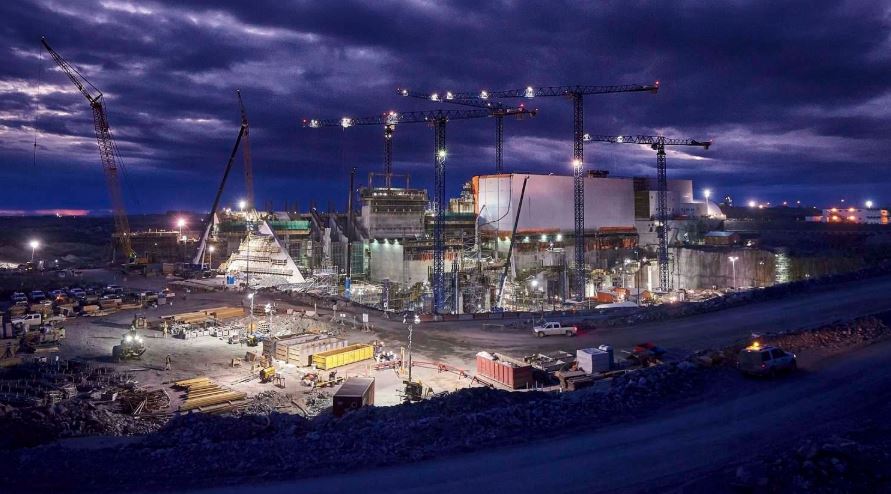In your bill from Manitoba Hydro this month, you probably received the usual "Energy Matters" leaflet, with an article titled "The Manitoba-Minnesota Transmission Project — a stronger grid for the province." It claims the purpose of this electric interconnection is "to strengthen the overall reliability of Manitoba’s electricity supply and to meet existing power sale agreements."
What it doesn’t mention is the capital cost to Hydro of this drastically overbuilt line to the U.S. could reach $1 billion. Hydro’s customer, Minnesota Power, desired a much smaller and lower-cost interconnection, but Hydro insisted a larger one was required. Minnesota Power responded that Manitoba Hydro should pay for it.
Hydro established a numbered company (6690271 Manitoba Ltd.) to pay for the U.S. portion. The cost of the Manitoba portion of this interconnection is $453 million, meaning Hydro, through its numbered company, will be paying $547 million into the U.S. — more than half the project’s total cost.
The need for this new interconnection was originally argued in 2014 Hydro’s "Preferred Development Plan," which included the 1,485-megawatt Conawapa project. But the Public Utilities Board excluded the Conawapa project from the scaled-down plan it approved, so why wasn’t this 750-megawatt Manitoba-Minnesota transmission project cut back as well?
What has gone horribly wrong in Hydro’s plan is that while it correctly anticipated a greater green-energy requirement in the future, it included only hydroelectricity as a non-carbon generation option. Xcel Energy, Manitoba Hydro’s largest export customer in the U.S. since 1980, recently published its average green-energy generation costs, which include large solar photovoltaics with battery storage at US$36/megawatt-hour, and a combination of wind, solar and battery storage at US$30.60/megawatt-hour.
Compare these green-energy prices with the approximate US$90/megawatt-hour energy from Keeyask, some of which Hydro will require for the Minnesota Power contracts.
Note also that Efficiency Manitoba, the replacement for Power Smart, requires Hydro to reduce its load 1.5 per cent from the previous year for each of the next 15 years — so it will be a long time until Keeyask’s power is required for Manitoba under the present circumstances. It is no wonder that Xcel Energy, Hydro’s other U.S. market, has no need to renew its existing firm energy contracts from Hydro after they expire in 2025.
It will be able to get cheaper green energy elsewhere or, if not, from Keeyask at fire-sale prices. As it stands, Hydro’s average electricity export prices have been stuck at only US$30/megawatt-hour for the past 10 years.
All this brings into question Hydro’s claim in the Energy Matters leaflet that this new electric interconnection to Minnesota Power "will also keep electricity rates in Manitoba lower by providing increased access to markets in the U.S. for export sales." If this is so, why are our rates still increasing?
To put things into perspective, Manitoba Hydro used to have the lowest-cost electricity on the continent, but not now. On April 1, 2018, Hydro-Québec increased its rates 0.3 per cent and on April 1, 2019, its rate increase was 0.9 per cent. In Manitoba on June 1, 2018, electricity rates increased 3.6 per cent, with another 3.5 per cent rate increase requested for 2019. By then, Manitoba residential electricity rates will be 30 per cent higher than Quebec’s.
The Energy Matters leaflet states that Manitoba-Minnesota interconnection will "strengthen the overall reliability of Manitoba’s electricity supply," citing protection against drought as a reliability issue. Concern about drought is a consequence of hydroelectricity being the sole source of Hydro’s electric energy, and more profitable ways to achieve protection from drought are possible than with this new electric interconnection.
Électricité de France is installing 75,000 electric vehicle charging stations in Europe. ENEL, the large Italian electric utility, is working with the Chinese BYD electric vehicle manufacturer, which is backed by Warren Buffett, to provide electric bus charging stations in South America. Quebec has established Écotech Québec to develop clean technologies as "an engine of wealth creation and prosperity." Actions are underway globally to deal with today’s energy-industry challenges, and Manitoba is being left behind.
Manitoba must cease selling its valuable hydroelectricity at a loss subsidized by domestic electricity rate increases. The provincial government can allocate its annual payments from Hydro to profitably invest in industry incentives to build our economy.
